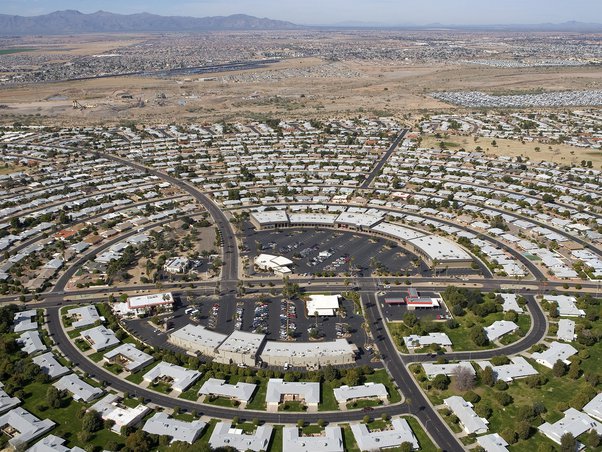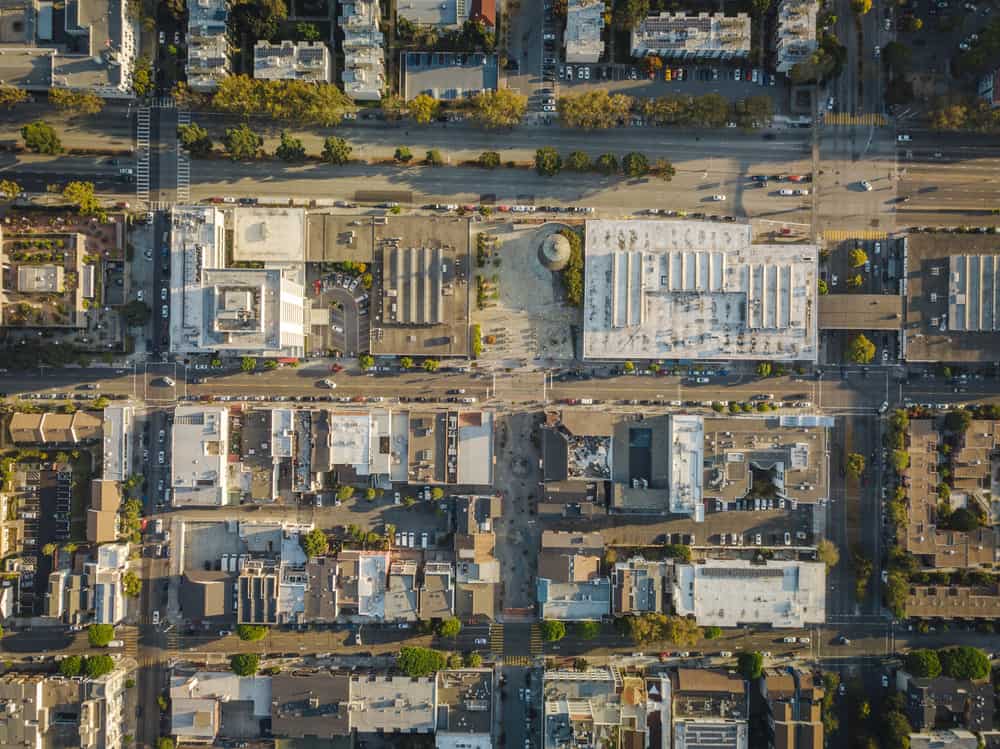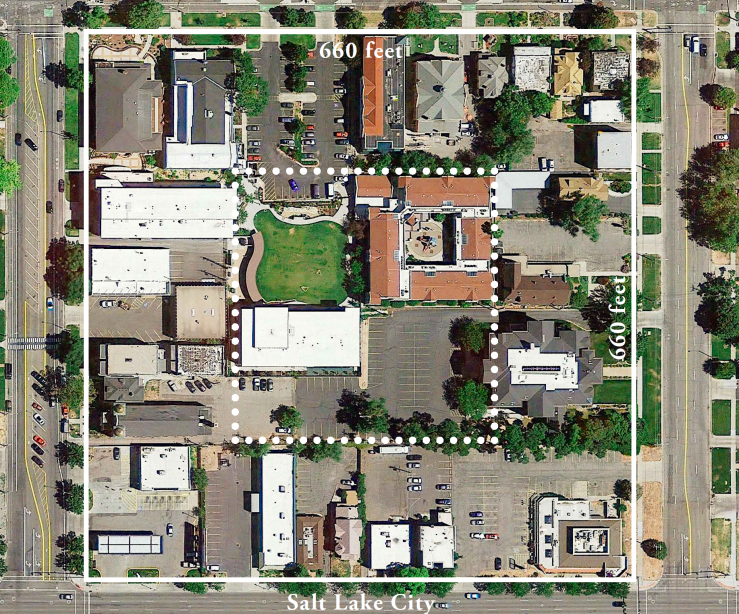A standard city block is typically about 300 feet wide by 325 feet long, although dimensions vary. This common size often suits new constructions and resembles that of a suburban home or small apartment building. However, block sizes can differ due to urban planning and historical context.
What is a block?
In urban design, a block is a defined area enclosed by streets on all sides. It’s a fundamental element of city planning, shaping the layout of streets, buildings, and public spaces. Also, blocks can vary significantly in size and shape, influenced by historical development and urban design principles.
They impact how cities are organized and how people navigate through them. Blocks often contain a mix of residential, commercial, or public spaces, contributing to urban areas’ overall functionality and aesthetics. Additionally, the concept of a block is crucial in creating cohesive and functional urban environments.
Characteristics Of A Block
The characteristics of a block, in the context of urban planning and design, can encompass various aspects that define its layout, size, function, and role within a city or town. Here are some key characteristics:
Size and Shape
Size and shape are crucial aspects of a block’s composition in urban planning. Blocks can vary from compact squares to elongated rectangles, influenced by historical context and development intent. These dimensions affect how buildings, streets, and open spaces are organized within the urban fabric, impacting overall functionality and aesthetics.
Boundaries
Boundaries define a block’s spatial extent. Formed by surrounding streets, they create a distinct area within a city. These boundaries dictate entry points, connections to adjacent blocks, and the overall layout of structures and open spaces. They are pivotal in shaping the urban environment and its flow.
Usage
Usage determines how a block is utilized within an urban context. Blocks accommodate diverse land functions, such as residences, commerce, industry, or recreation. The allocation of space within a block influences the local character, defining whether it’s a residential neighborhood, a commercial centre, or a mix of daily life activities.
Building Density
Building density refers to the concentration of structures within a block. High-density blocks have closely spaced buildings, often seen in urban centres. Low-density blocks feature more open space. Density impacts land use efficiency, infrastructure demands, and urban experience.
Street Network
A street network outlines how roads intersect and connect within a block. It determines accessibility, traffic flow, and pedestrian movement. Network patterns like grids, cul-de-sacs, or diagonals influence urban navigation, affecting how people traverse and interact within the city.
Public Spaces
Public spaces within a block include parks, plazas, or squares that encourage social interaction and recreation. These areas enhance the quality of life, providing residents and visitors with places to gather, relax, and engage, contributing to the overall vitality of the urban environment.
Infrastructure
Infrastructure encompasses essential systems within a block, including utilities, roads, sidewalks, and drainage. Properly designed and maintained infrastructure supports daily life, enabling utilities to flow, transportation to function, and waste to be managed efficiently. It’s the backbone that sustains the block’s functionality and services.
Accessibility
The design of a block affects how easily people can access and navigate through it. Proximity to transportation hubs and significant roads can impact a block’s accessibility.
Aesthetics
Aesthetics pertain to the visual and sensory aspects of a block’s design. Architectural styles, landscaping, and presentation influence the block’s attractiveness and identity. Thoughtful aesthetics contribute to the environment’s appeal, fostering a sense of place and community pride.
Zoning and Regulations
Zoning and regulations govern land use, building height, setbacks, and more within a block. Local codes ensure that development aligns with the city’s vision, balancing aesthetics, safety, and functionality. Zoning defines whether a block hosts residential, commercial, or mixed-use structures, contributing to a harmonious urban fabric.
Historical Context
The historical development of a city can influence the size, layout, and character of blocks. Older areas might have more irregularly shaped blocks due to organic growth, while newer areas might adhere to planned layouts.
Moreover, the characteristics of a block encompass its physical size, layout, land use, infrastructure, and role within the urban environment. These elements collectively contribute to a city or neighbourhood’sneighborhood’s functionality, aesthetics, and overall character.
What are some common block sizes in different types of cities?

Here’s a table summarizing typical block sizes in different types of cities:
| City Type | Typical Block Sizes | Rationale and Characteristics |
| Suburban Developments | More extensive, often around 1/8 to 1/4 mile (660 to 1,320 feet) in length. | Provides space for single-family homes and yards in a suburban setting. |
| Grid-Based American Cities | Typically 300-400 feet in length. | Supports efficient street layout, walkability, and transportation networks. |
| Historic European Cities | Varied, often around 200-300 feet in length. | Reflects historical development and prioritizes pedestrian-friendly streets. |
| Modern Planned Cities | It can vary widely, often 400-600 feet. | Customizes blocks for green spaces, mixed-use areas, or transportation hubs. |
| High-Density Asian Cities | Compact, around 100-150 feet in length. | Maximizes land utilization in densely populated urban areas. |
| Mixed-Use Urban Areas | Varies widely, from 200 to 400 feet. | Facilitates a blend of commercial, residential, and recreational spaces. |
| Industrial Zones | Larger, often around 600-800 feet. | Accommodates factories, warehouses, and transportation infrastructure. |
| Planned Communities | Varied based on community themes, commonly 300-500 feet. | Tailors block sizes to match community needs and preferences. |
| Old Towns and Historic Districts | Irregular shapes, often around 100-200 feet. | Preserves cultural heritage and maintains architectural character. |
| Mixed Density Areas | Adapts to neighborhood needs, commonly 300-400 feet. | Accommodates varying dynamics, from urban cores to residential outskirts. |
Moreover, Please note that these descriptions provide general trends, and actual block sizes can vary based on local regulations, urban planning principles, and historical development patterns.
What factors determine the size of a block?
The size of a block in urban planning and design is influenced by various factors that consider functionality, aesthetics, infrastructure, and historical context. Here are the key factors that determine the size of a block:
- Different urban planning philosophies advocate for varying block sizes to achieve goals like walkability, mixed land uses, or green spaces.
- Zoning codes and regulations set by local governments often dictate the maximum and minimum dimensions of blocks, ensuring adherence to city plans and safety standards.
- The capacity of existing infrastructure, such as road networks, utilities, and public services, can impact block size to accommodate efficient service delivery.
- The intended use of the block—residential, commercial, industrial, mixed-use—plays a role in determining its dimensions to cater to the community’s needs.
- The type of buildings—single-family homes, apartments, office buildings—affects block size, as different structures have varying space requirements.
- Older cities may have blocks influenced by historical development patterns, while newer developments might adhere to contemporary urban planning principles.
- Accessibility to public transportation, major roads, and walkability can influence block size to ensure ease of movement.
- Factors like land value, construction costs, and market demand can influence the size of blocks to optimize land use and profitability.
- Residents and stakeholders might influence block size through community planning efforts to address their needs and preferences.
- Cultural norms, social interactions, and local customs can impact block design and size to create spaces that resonate with the community.
How Long Does It Take To Walk A Block?
The time it takes to walk a block can vary widely depending on several factors, including the size of the block, your walking speed, and the terrain. Here are some general guidelines:
Size of the Block
Block sizes vary significantly from city to city, even within the same city. In some cities, a block might be as short as 100 feet, while in others, it can be several hundred feet long. The length of the block will directly impact the time it takes to walk across it.
Walking Speed
The average walking speed for most adults is around 3 to 4 miles per hour (about 4.8 to 6.4 kilometres per hour). This speed assumes a comfortable, leisurely pace. If you walk faster, you’ll cover a block more quickly.
Terrain and Obstacles
The terrain can also affect your walking speed. Walking uphill or on uneven surfaces will slow you down while walking on a flat, smooth sidewalk will allow you to maintain a consistent pace. Additionally, if you encounter obstacles like crowds, traffic lights, or crosswalks, it will add time to your walk.
Physical Condition
Your fitness level can impact your walking speed. Some people naturally walk faster than others, and your level of physical fitness can affect how quickly you can cover a block.
As a rough estimate, assuming an average block size in a city and an average walking speed of 3 to 4 miles per hour, it might take 1 to 3 minutes to walk a city block. However, remember that this is a general estimate, and the actual time can vary widely based on the factors mentioned above.
Moreover, if you need a more precise estimate for a specific location, you can use mapping apps or devices that provide walking directions and estimated walking times based on your chosen route and speed.
Why Are City Blocks Different Lengths?

The length of city blocks can be influenced by various historical, practical, and urban planning factors, as highlighted in the provided text. Here’s a breakdown of how these factors contribute to the variation in city block lengths:
Weather/Climate
In the early development of cities, the local climate played a significant role in determining block sizes. In regions with hot climates, buildings were often designed to stay cool by being closer to the ground, utilizing natural shade, and maximizing airflow. Conversely, taller buildings were preferred to maximize access to natural light in areas with long periods of darkness.
Type of City
The intended purpose of a city can impact block lengths. Industrial cities may have longer blocks to accommodate large factories and warehouses, while mixed-use cities with residential and commercial areas may feature a mix of block sizes. The specific needs of the city’s industries and population influence block design.
Cars and Traffic
The advent of automobiles significantly impacted city planning. Modern city blocks often have adequate room for parking and wide roads to accommodate cars, trucks, and buses. Older cities, designed before the automobile era, may have shorter blocks optimized for pedestrian and horse-drawn traffic. Newer cities may assume residents will use public transportation or personal vehicles, impacting block sizes.
Pre-existing Structures
Existing buildings, natural features like hills or bodies of water, and historical landmarks can affect the layout of city blocks. Urban planners and engineers must work around these preexisting elements, resulting in varying block sizes and irregular layouts in some areas.
City’s Age and Location
The age of a city and its geographical location also play roles in block size determination. Over time, older cities with organic growth may have irregular block sizes due to historical development. Additionally, cities in hilly or geographically challenging areas may have blocks that do not conform to a standard grid.
Should I Walk Or Drive Five Blocks?
Whether you should walk or drive five blocks depends on various factors, including your circumstances and preferences. Here are some considerations to help you decide:
- Five city blocks can vary in length, as we discussed earlier. Walking might be a convenient and healthy option if each block is relatively short. However, driving could be more efficient if the blocks are longer or you’re in a hurry.
- Walking five blocks generally takes longer than driving the same distance, especially if you’re walking leisurely. Consider how much time you have available for your journey.
- Weather conditions can influence your decision. Walking can be a pleasant and eco-friendly option if it’s a pleasant day. However, driving might provide more comfort and protection from the elements if it’s raining, extremely hot, or very cold.
- Walking can be a great way to incorporate physical activity into your day. Walking five blocks can be a good choice if you enjoy walking and want to exercise.
- Consider the traffic conditions and parking availability in your area. If traffic is heavy, finding parking is difficult, or you’ll spend more time searching for a parking spot than walking, walking might be the better option.
- Walking is generally more environmentally friendly than driving, as it produces no emissions. If you’re conscious of your carbon footprint, walking may align better with your values.
- Walking is free, whereas driving incurs costs like fuel, parking fees, and potential wear and tear on your vehicle. Consider the financial aspect when deciding.
- Evaluate the convenience of each option. Walking can be more straightforward if you’re close to your destination and don’t need to carry heavy items. Driving may be more convenient if you have much to transport or if walking isn’t practical.
- Consider the safety of the route you would take. If you’re walking in a well-lit, pedestrian-friendly area, it may be safe to walk. In contrast, driving might be the safer choice if you’re concerned about safety due to traffic or other factors.
Moreover, the decision to walk or drive five blocks depends on your circumstances, including time constraints, physical conditions, weather, and personal preferences. Weigh these factors and choose the option that best suits your needs for that particular trip.
FAQs
What is a city block distance?
A city block distance is the length between two parallel streets enclosing a city block. It varies widely but is often around 1/16 to 1/8 of a mile, equivalent to roughly 330 to 660 feet. This distance contributes to the layout, accessibility, and character of urban areas.
How big is a city block in acres
A city block’s size in acres can vary, but a common measurement is around 2 to 5 acres. For example, if a city block is approximately 546.80665 feet long, an area of about 4 square acres is roughly equivalent to a one-square city block.
How long is a city block in meters
A city block’s length in meters can vary. For example, in Manhattan, the standard block measures about 264 by 900 feet (80 m × 274 m), while in Chicago, a typical block is 330 by 660 feet (100 m × 200 m). This diversity reflects urban planning practices and influences accessibility within cities.
How far is 10 blocks to walk?
Walking 10 blocks typically covers a distance of approximately 0.5 miles. It takes around 10 minutes to walk this distance. An average walking speed is about 3 miles per hour, equivalent to approximately 1 block per minute. Actual times might vary based on factors like terrain and individual pace.
Final Verdict
The size of a block can vary widely, depending on location and urban planning. In cities, a standard block can range from around 300 to 325 feet long, while suburban blocks might span 1/8 to 1/4 of a mile.
Internationally, blocks can differ significantly. Context, city layout, and local regulations play crucial roles in determining the size and dimensions of a block within a specific urban or suburban area.
If you want to learn more about urban planning and how block sizes shape our cities. Then you can read this article. Moreover, understanding these elements creates functional and aesthetically pleasing urban environments.










